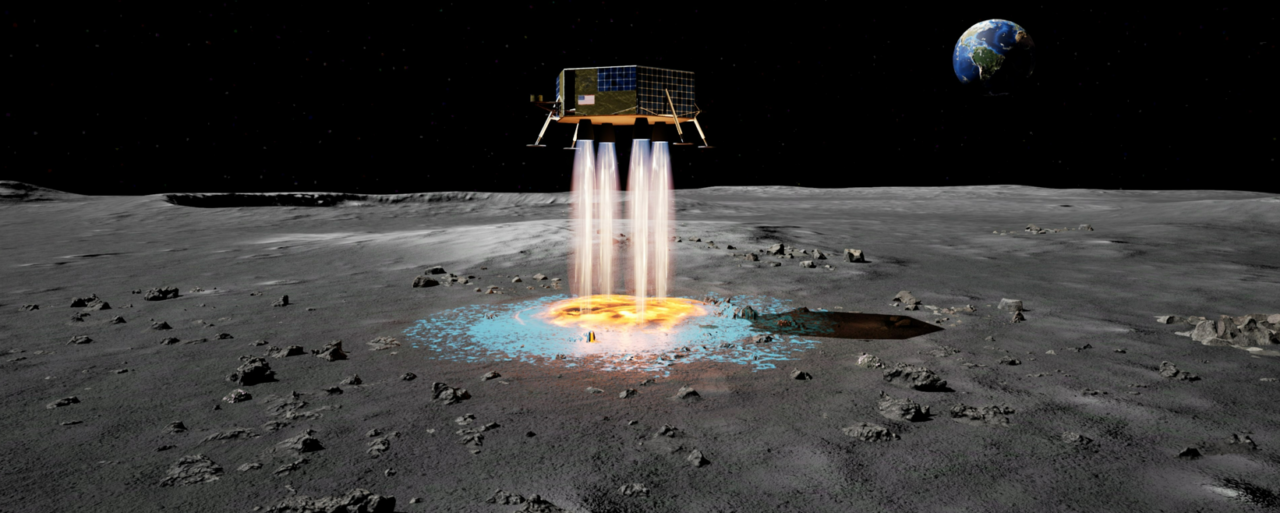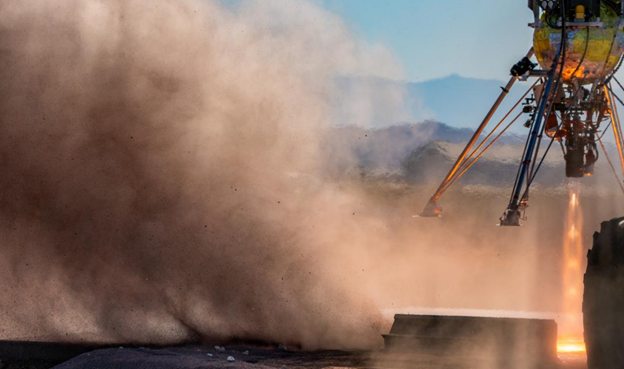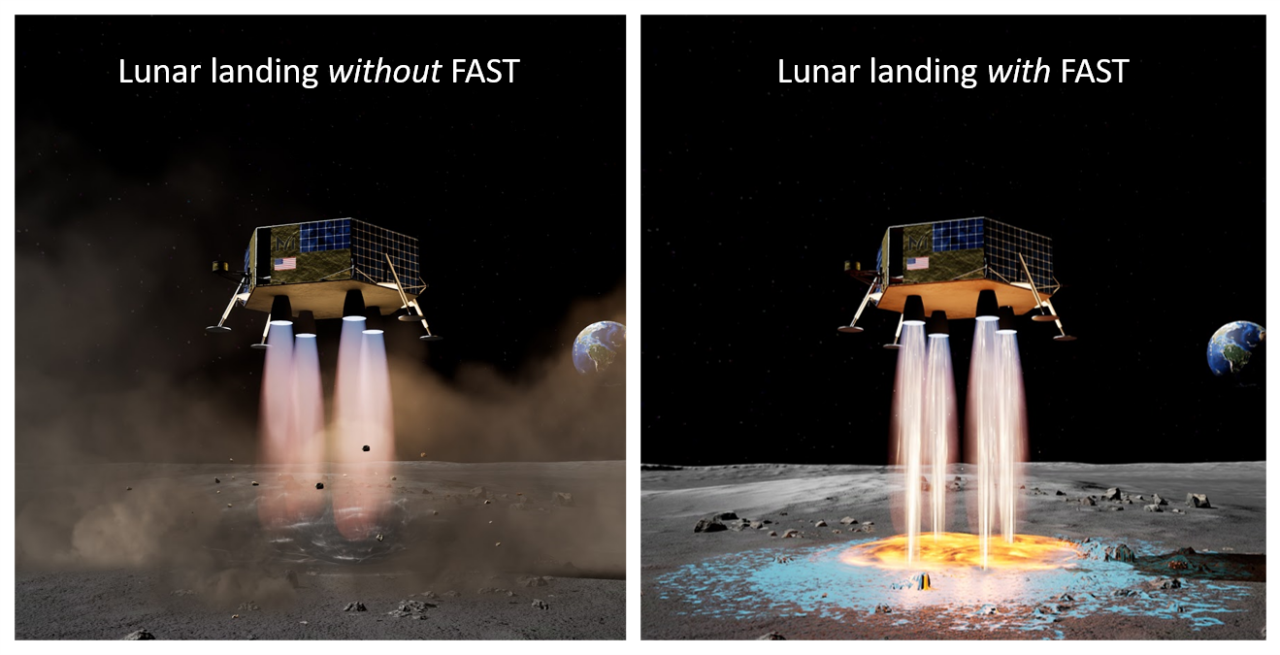FAST system will allow moon rovers to create their own landing sites before landing

Masten Space Systems is working on a way to protect future lunar landers from the regolith ejected by their engines upon landing by introducing alumina ceramic particles into the rocket engine plume to glue the lunar dust together and create their own landing pads just before landing.
What's the point
Most of the Moon's surface is covered in regolith, which consists of small dust particles and larger grains formed as a result of the Moon being hit by meteorites for billions of years. In the absence of water or atmosphere, these particles have a sharp, jagged shape that makes them extremely tough on everything from machinery to spacesuits.

This was hard enough in the Apollo days when the regolith caused wear and tear on equipment faster than expected, and also posed a danger to the astronauts' lunar module and the experiments they left on the surface. This is because the explosion from the spacecraft engine turns each particle into a fragment flying in a vacuum at 3000 m/s.
That's bad enough for the Apollo lunar module, which weighed 15 tons when fueled, but landers planned for future missions will weigh 20 to 60 tons. They will require more powerful engines with much more thrust, which means that when the rocket blows up a deep crater in the surface, the ejected dust will be much more dangerous over a much larger area.
And what is the solution
The obvious solution to this problem would be to build landing pads, similar to the pads and runways used in ground-based airports, to prevent damage from jet backfire. Unfortunately, this is one of those situations where you can't land until you build a pad, but you can't build a pad until you land.

Developed in collaboration with Honeybee Robotics, Texas A&M University and the University of Central Florida as part of NASA's Phase 1 Innovative Advanced Concepts award, the In-Flight Alumina Spray Technique (FAST) project has completed a year-long preliminary concept study.
In FAST, ceramic alumina particles are injected into the rocket plume during descent. These particles coat the surface, consolidating the regolith into a solid cushion of impressive thickness that is highly heat resistant and stable. This protects the vehicle not only during descent, but also during re-entry to return to lunar orbit.
Masten says the next step is to test the concept in the lunar environment. If successful, it could significantly reduce the cost of lunar exploration and development, paving the way for new missions not only to the Moon but also to Mars and elsewhere in the solar system.
Source: masten.aero